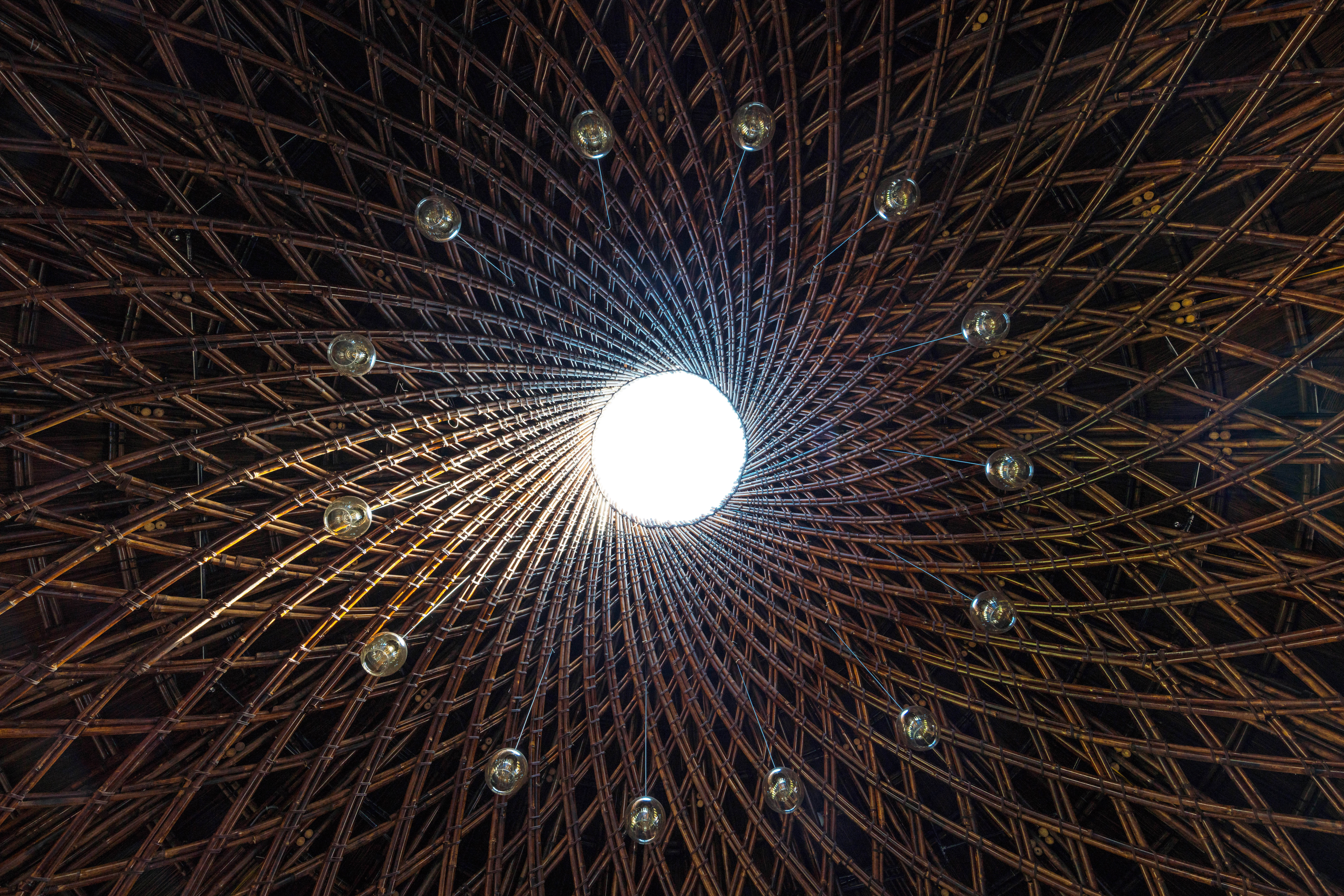Celebrate a decade of inspirational design with us! Architizer’s 10th Annual A+Awards program is now open for entries — sign up for key program updates or enter now.
“Once is happenstance. Twice is coincidence. The third time it’s enemy action.”
If the famous line from Goldfinger is to be believed, then James Bond is the enemy of Architecture. The decimation of lairs, labs, hideouts and hotels throughout the Bond movies is second to none. As an aficionado of beautiful buildings, witnessing the exquisite interiors and renowned architectural landmarks (designed by Ken Adams — the man behind most of the classic Bond sets) being reduced to rubble can induce an uncomfortable tension, regardless of the fact it’s fiction.
In reality, however, it’s not 007 himself who has an aversion to modern architecture, but Bond writer Ian Fleming. The author’s scathing reviews of Le Corbusier are well documented, and he infamously named one of his notorious villains after Erno Goldfinger, architect of London’s Trellick Tower, who was also apparently Fleming’s neighbor. As the story goes, the author was incensed when Goldfinger demolished two victorian houses and replaced them with two classic modern villas. So, Fleming — much to Goldfinger’s annoyance and argument — appropriated the architect’s name and cemented it in cultural history as one of the most recognizable bad guys on our screens.
Thankfully, all is not lost. Ian Fleming’s penchant for blowing up minimalist havens and architectural feats of brilliance may have been translated onto the big screen, resulting in architects all over the world wringing their hands for the movies’ two hours durations; however, many of the historical landmarks were saved the fiery fates of their modern counterparts and remain intact for all to admire (with a Vesper martini in hand!). And although there are far too many to list them all, here are a few personal favorites that should be on the to-visit lists for any Bond fan or architecture lover alike.
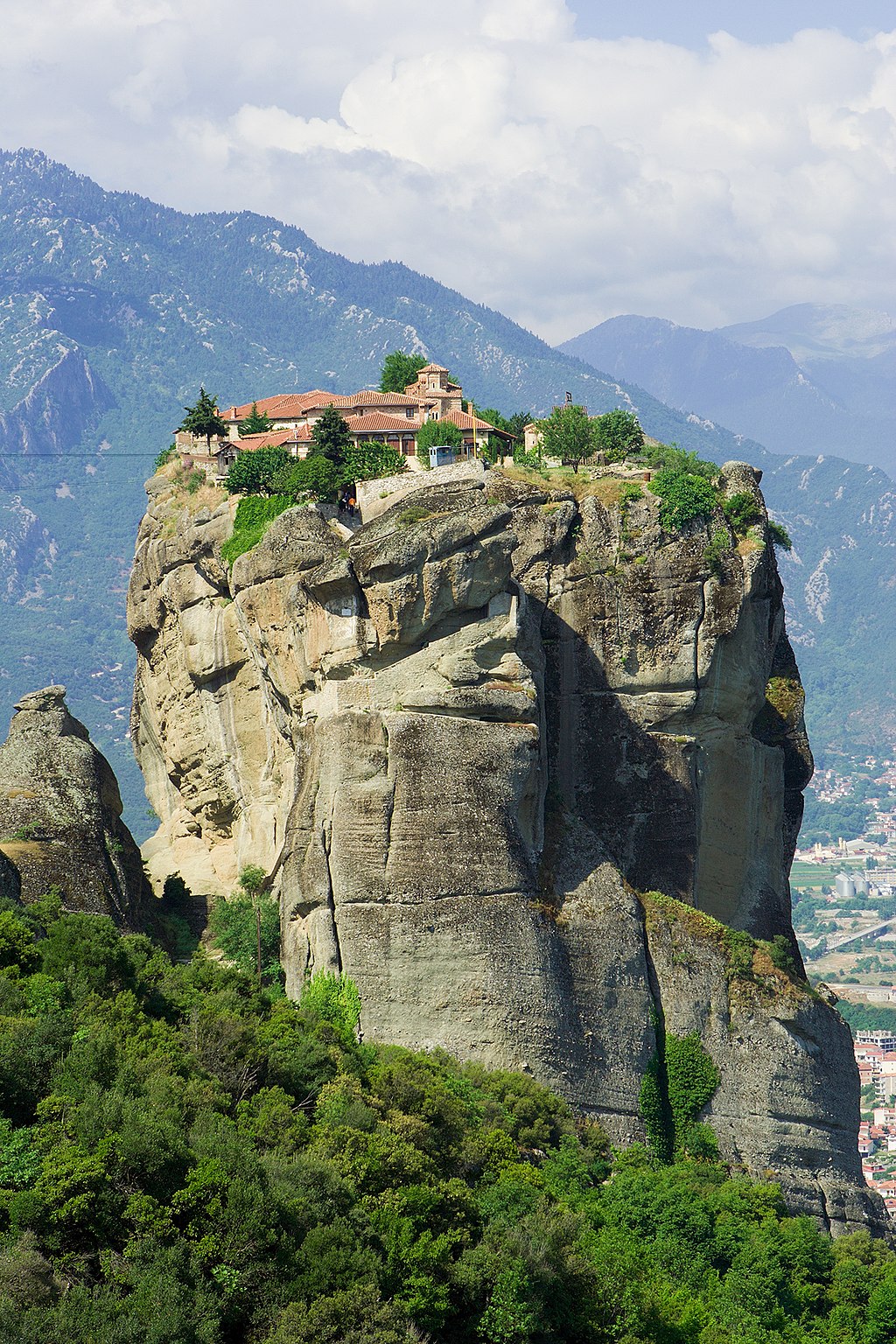
The Monastery of the Holy Trinity, Kalambaka, Greece
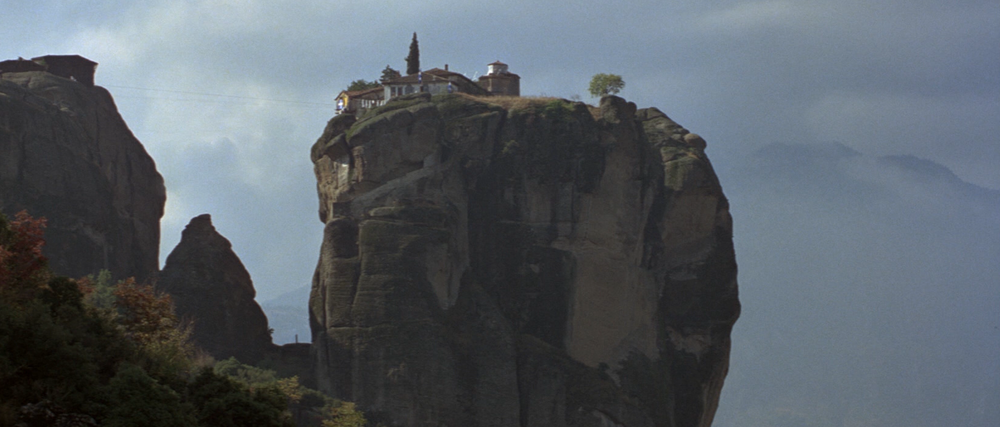
For Your Eyes Only (1981)
The Monastery of the Holy Trinity
Situated at the top of a rocky precipice, The Monastery of the Holy Trinity was constructed between the fourteenth and fifteenth centuries and overlooks the scenic Pineios Valley near Kalambaka, Greece. A remarkable Meteoric cliff structure, the area is a UNESCO World Heritage Site. It is accessed only by 130 perilous steps used by monks and occasionally by James Bond. In 1981’s “For Your Eyes Only,” the monastery was renamed St. Cyril’s Monastery and served as the hideout of Aristotle Kristatos. Roger Moore’s Bond scales the perilous rock face to infiltrate the refuge and capture a coveted decoder. Nearly falling to his death on more than one occasion.
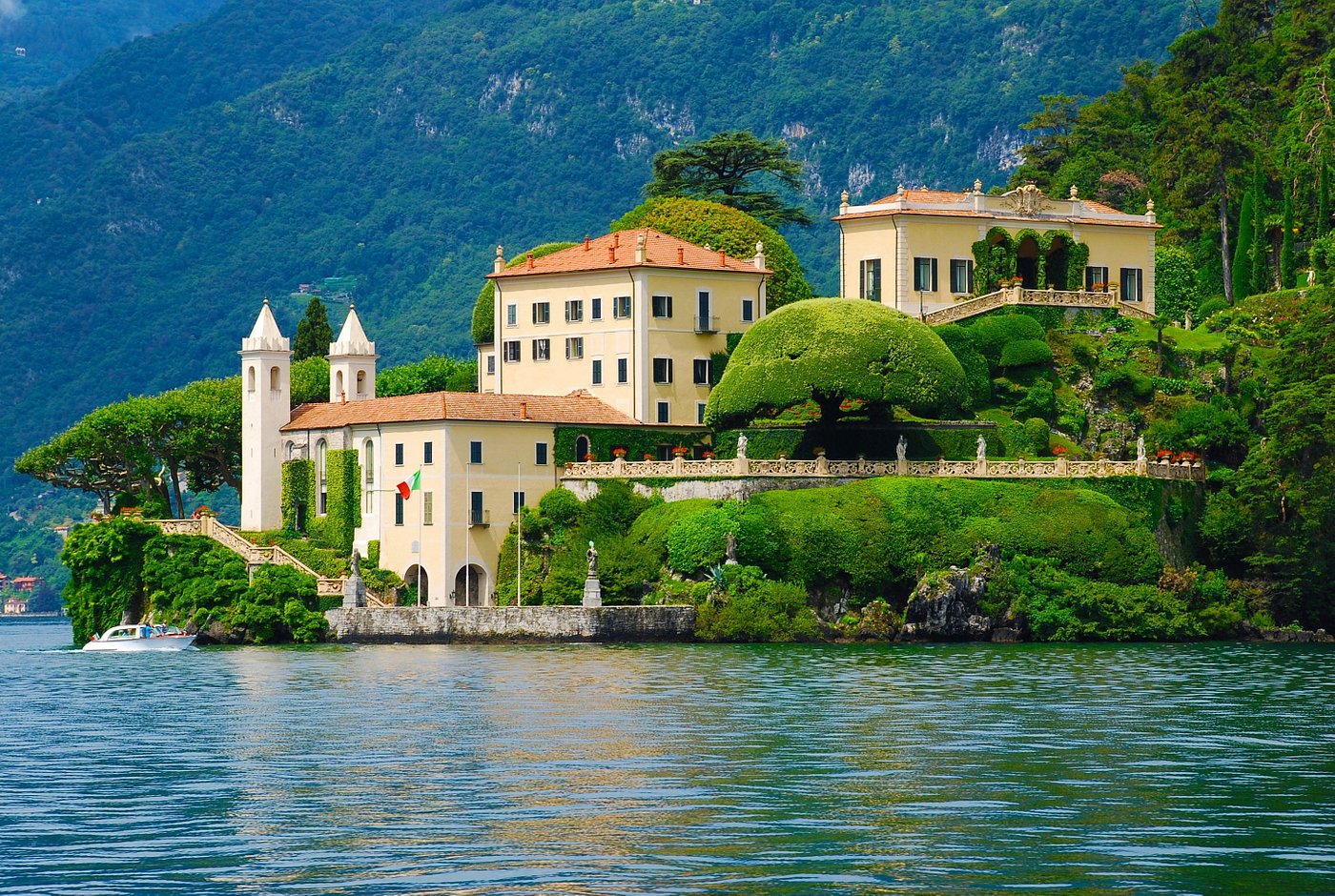
Villa del Balbianello, Lake Como, Italy
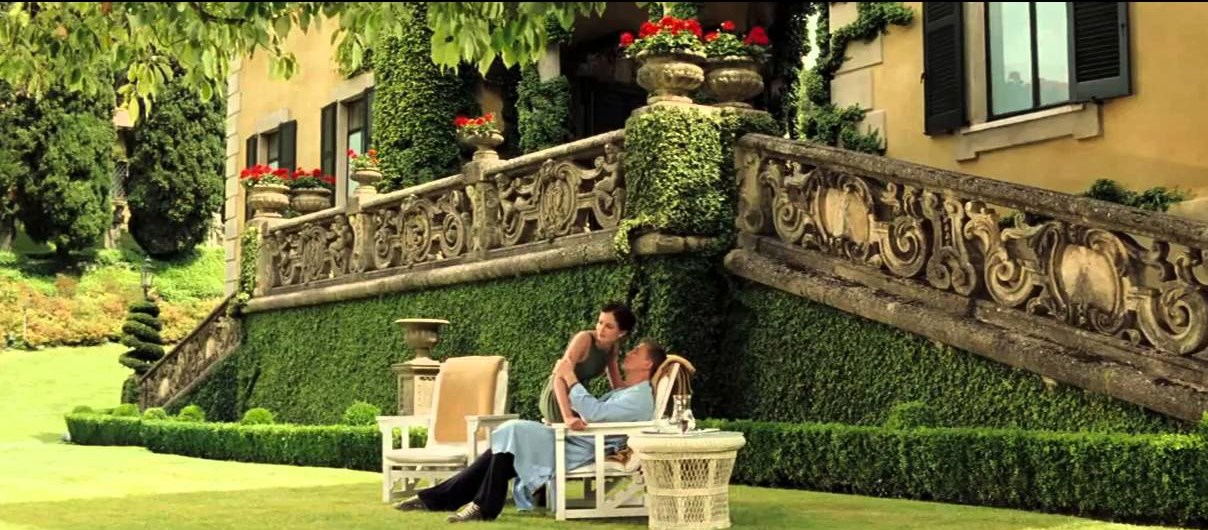
Casino Royale (2006)
Villa del Balbianello
On a wooded peninsula projecting into Lake Como is Villa Del Balbianello. The scenic villa was built in 1787, on the site of a Franciscan monastery, by Cardinal Angelo Durini and then renovated by the American General Butler Amos in 1988. It is featured in several blockbuster films, most notably Star Wars: Episode II – Attack of the Clones and, of course, Casino Royale (2006), where we saw Daniel Craig’s Bond slowly recovering from torment and torture at the beautiful lakeside retreat.
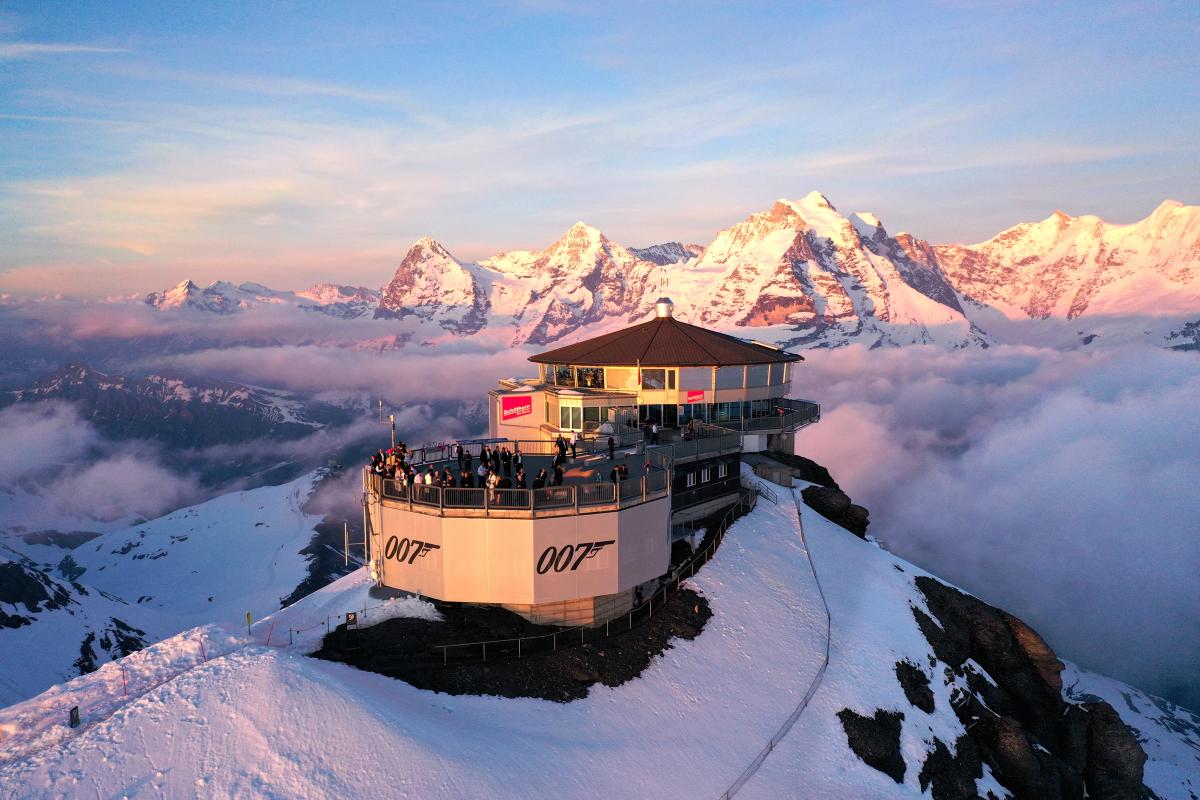
Piz Gloria by Konrad Wolf, Schilthorn, Switzerland
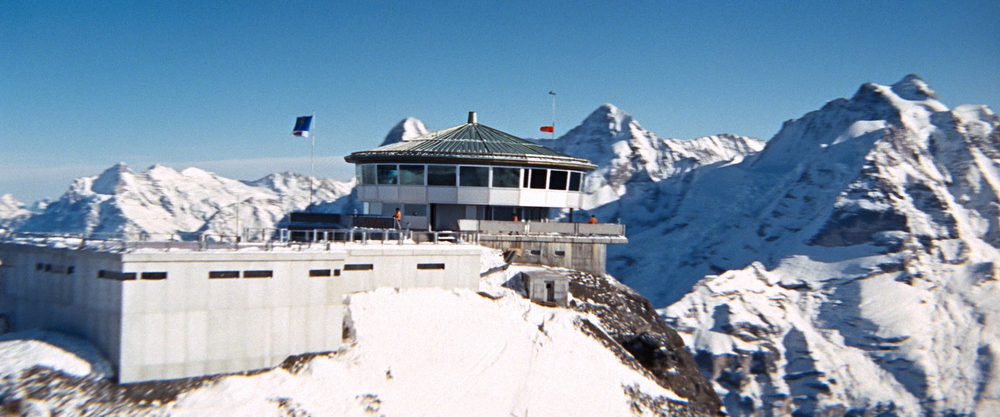
On Her Majesty’s Secret Service (1969)
Piz Gloria
An example of fiction turned into reality. In Ian Fleming’s On Her Majesty’s Secret Service, Piz Gloria was originally a mountain peak, home to an “allergy research clinic” and ski resort owned by Comte Balthazar de Bleuchamp. However, for the 1969 film adaptation of On Her Majesty’s Secret Service, the scenes featuring the “allergy clinic” were shot atop the now-famous revolving restaurant named Piz Gloria. The cable car station and the restaurant were designed by Bernese architect Konrad Wolf. The movie production team found the restaurant partly constructed and contributed financially to its completion in return for exclusive use for the filming of the movie.
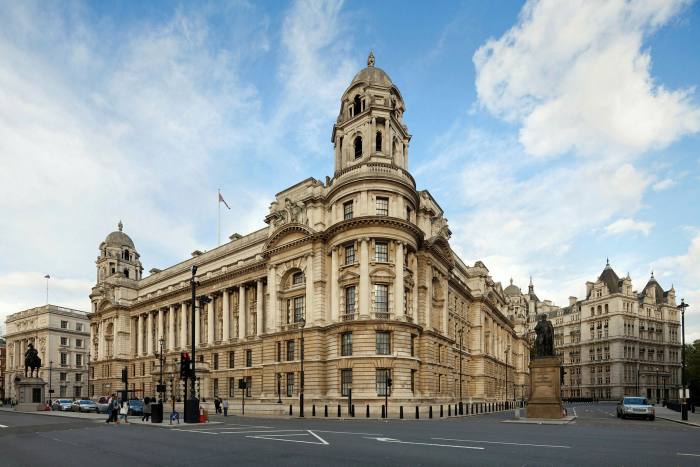
Old War Office, London, United Kingdom
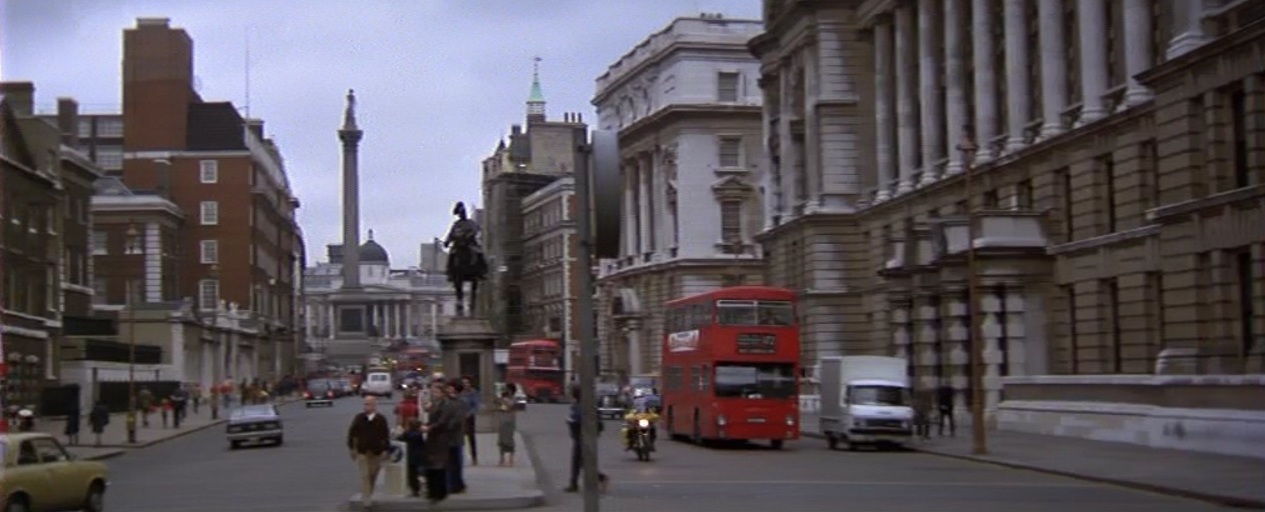
Octopussy (1983)
The Old War Office
Steeped in the history of 007, The Old War Office in London is said to be where Fleming dreamt up his suave spy. The building features prominently in many Bond films throughout the years, posing as the Mi6 headquarters in Octopussy (1983), A View to a Kill (1985), Licence to Kill (1989), Skyfall (2002) and most recently Spectre (2015). After being closed to the public for over a Century, The OWO is set to open in 2022 as London’s first Raffles Residence. The soon-to-be Hotel and Residence has undergone an immense renovation that captures the building’s beauty and heritage that would entice any Bond.
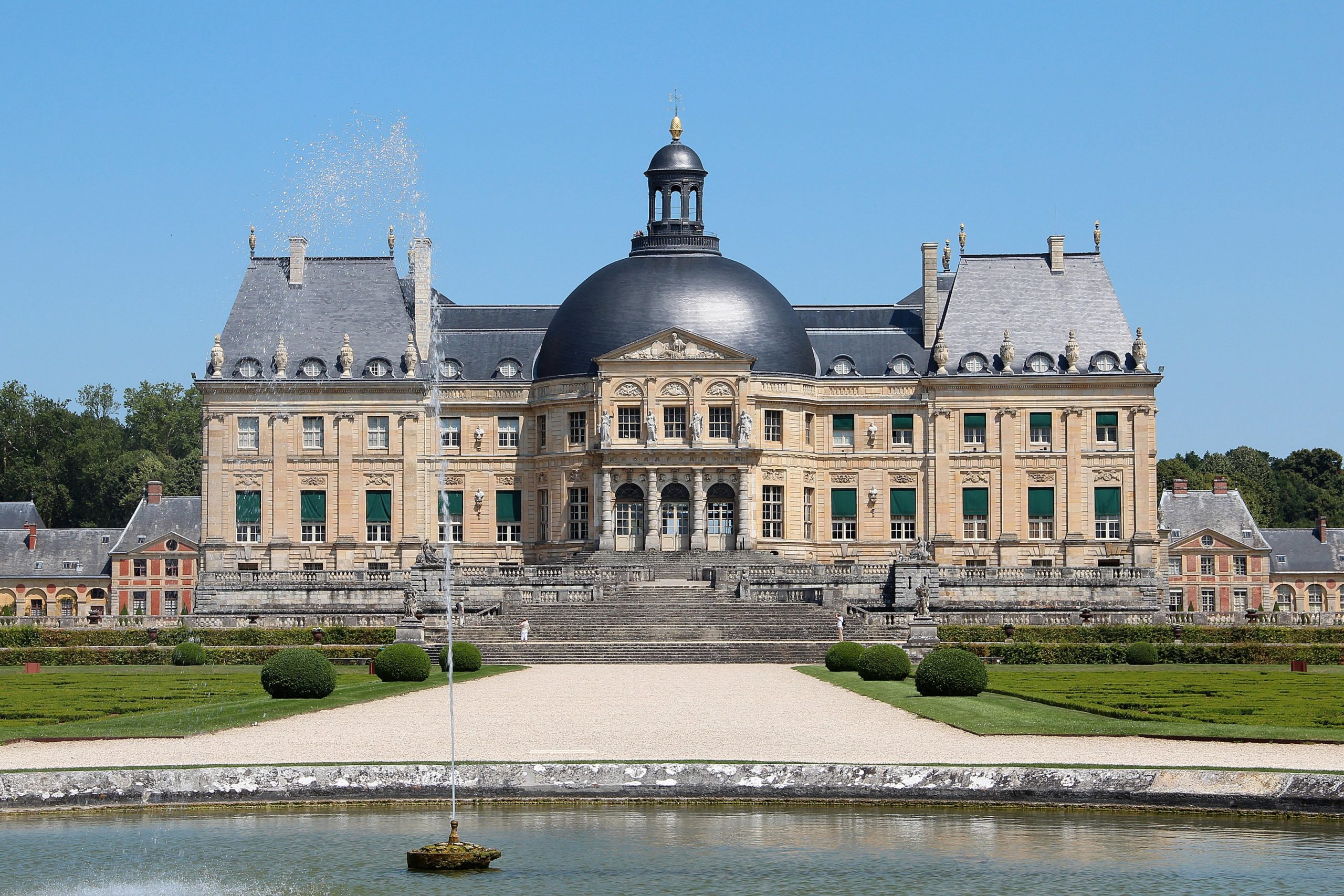
Château de Vaux-le-Vicomte by Louis Le Vau, Paris, France Photograph by Jean-Pol Grandmont
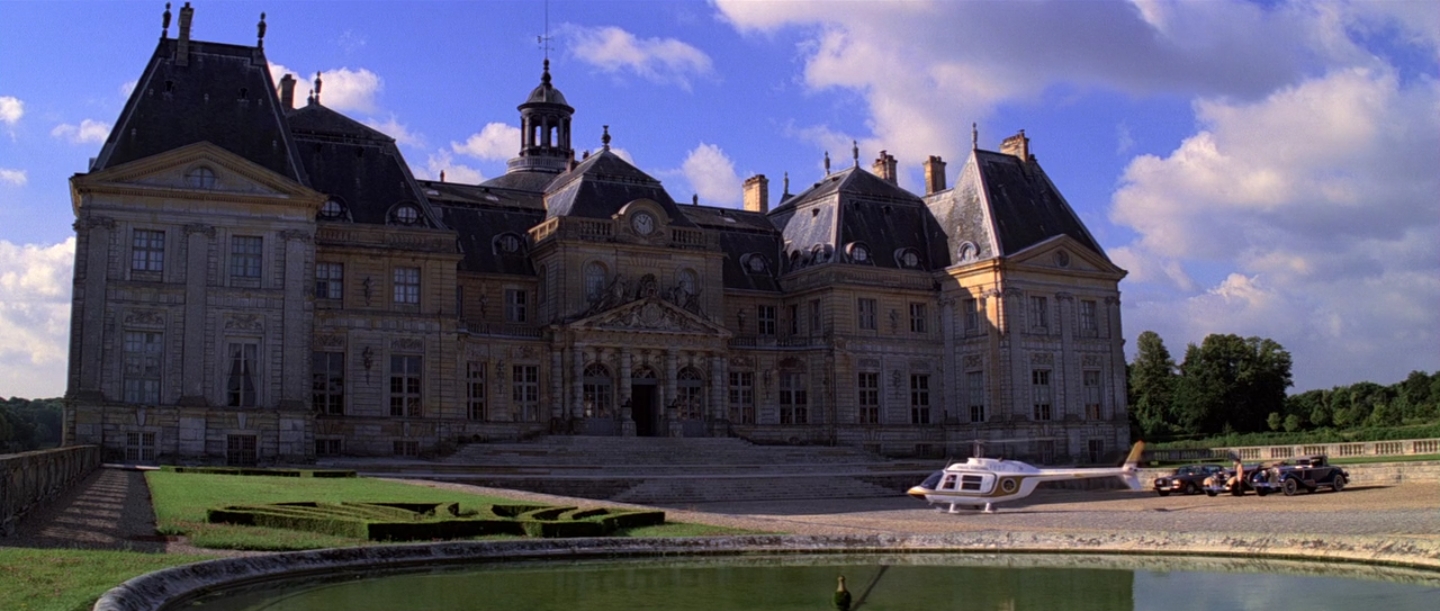
The Drax Estate, Moonraker (1979)
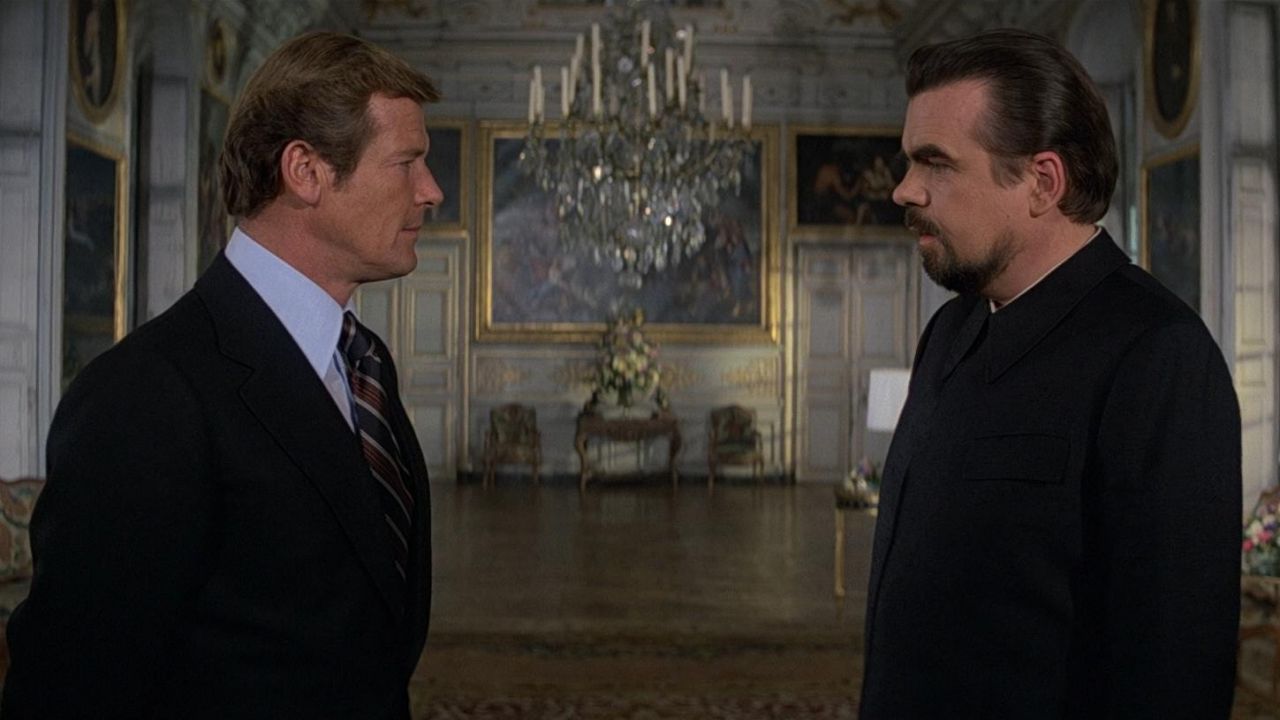
Moonraker (1979)
Château de Vaux-le-Vicomte
Appearing in 1979’s Moonraker, The Drax Estate is the California-based home of billionaire industrialist and all-round bad guy Hugo Drax. Comprised of a number of buildings, the estate was allegedly shipped stone-by-stone from France. In reality, the exterior of the antagonist’s home was filmed at the Château de Vaux-le-Vicomte just outside Paris and designed by architect Louis Le Vau in the 17th Century.
Similarly, the interior was filmed at the Château de Guermantes, near Paris. The adjoining Moonraker manufacturing plant, where Roger Moores Bond meets Dr. Goodhead, was shot at the Centre Pompidou also in Paris and designed by the well-known architectural team of Richard Rogers, Su Rogers, Renzo Piano and Gianfranco Franchini.
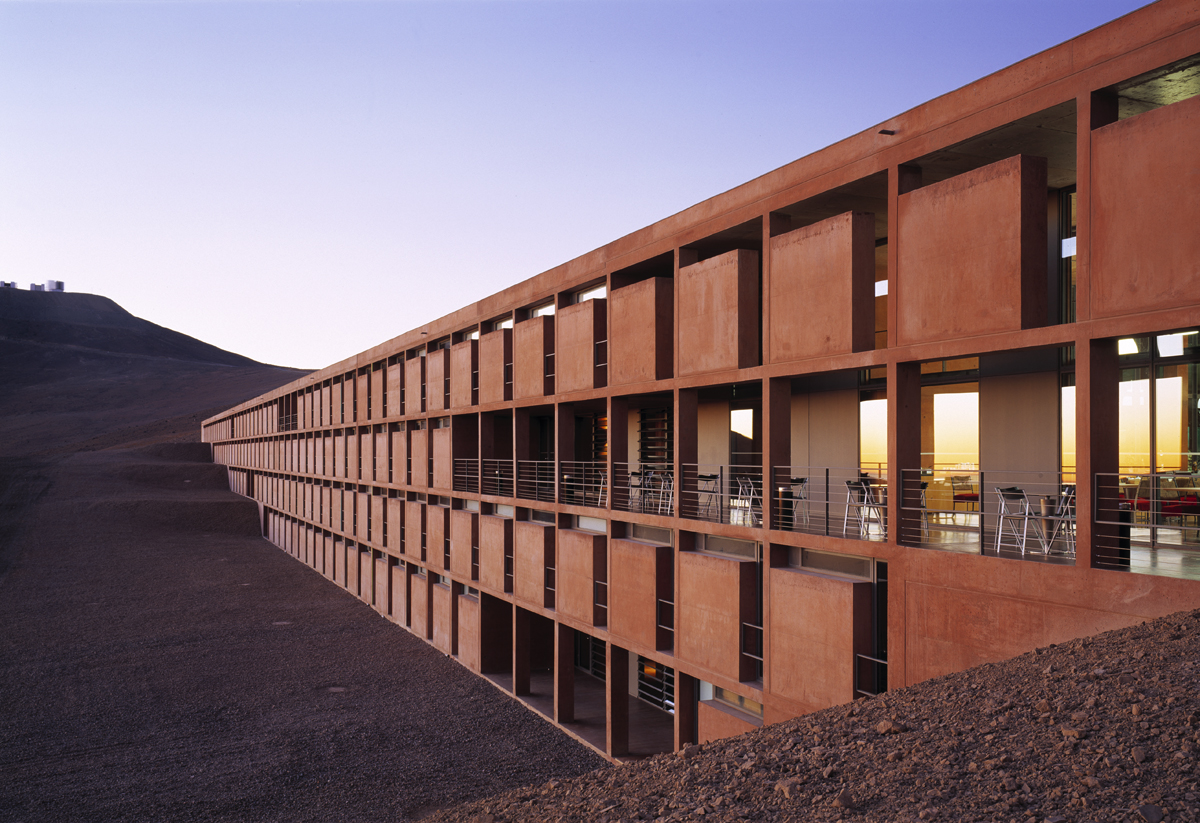
ESO Hotel by Auer Weber in Taltal, Antofagasta, Chile. Photograph by Roland Halbe
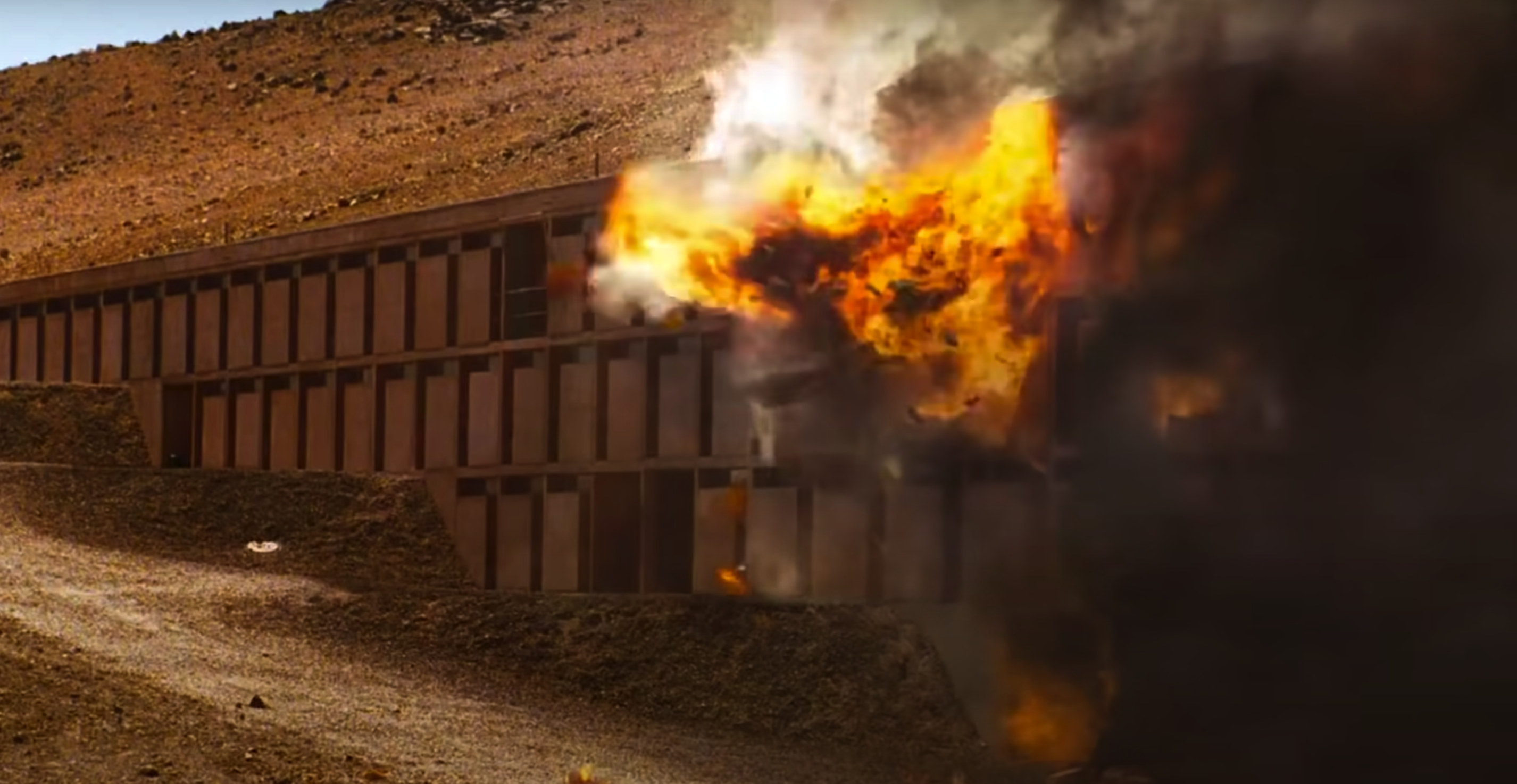
Quantum of Solace (2008)
ESO Hotel
The ESO Hotel at Cerro Paranal is ordinarily the accommodation for the Paranal Observatory in Chile. It is mainly used by scientists and engineers working at the observatory and was designed by Auer Weber. In the world of 007, however, the linear structure is depicted as an eco-hotel set in the Atacama desert of Bolivia and named Perla de las Dunas. It appears in Quantum of Solace (2008) and serves as a meeting place for Dominic Greene, General Medrano and Daniel Craig’s Bond. The building is (rather unceremoniously) blown up in the film. Thankfully a scale model was the only thing to be harmed during production.
Celebrate a decade of inspirational design with us! Architizer’s 10th Annual A+Awards program is now open for entries — sign up for key program updates or enter now.

